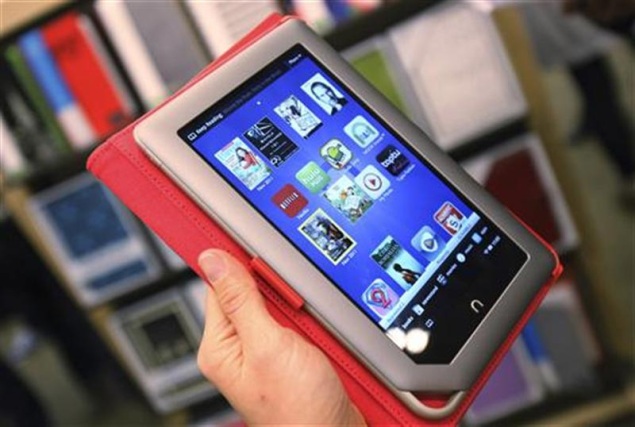- Home
- Internet
- Internet News
- E readers help dyslexics comprehend, read text more easily: Study
E-readers help dyslexics comprehend, read text more easily: Study

While e-readers are growing in popularity as convenient alternatives to traditional books, researchers have found that convenience may not be their only benefit.
The team discovered that when e-readers are set up to display only a few words per line, some people with dyslexia can read more easily, quickly and with greater comprehension.
An element in many cases of dyslexia is called a visual attention deficit. It is marked by an inability to concentrate on letters within words or words within lines of text. Another element is known as visual crowding - the failure to recognise letters when they are cluttered within the word. Using short lines on an e-reader can alleviate these issues and promote reading by reducing visual distractions within the text.
"At least a third of those with dyslexia we tested have these issues with visual attention and are helped by reading on the e-reader," said Matthew H Schneps, director of the Laboratory for Visual Learning at the Smithsonian Astrophysical Observatory and lead author of the research. "For those who don't have these issues, the study showed that the traditional ways of displaying text are better," said Schneps.
The study examined the role the small hand-held reader had on comprehension, and found that in many cases the device not only improved speed and efficiency, but improved abilities for the dyslexic reader to grasp the meaning of the text.
The team tested the reading comprehension and speed of 103 students with dyslexia who attend Landmark High School in Boston. Reading on paper was compared with reading on small hand-held e-reader devices, configured to lines of text that were two-to-three words long.
The use of an e-reader significantly improved speed and comprehension in many of the students. Those students with a pronounced visual attention deficit benefited most from reading text on a handheld device versus on paper, while the reverse was true for those who did not exhibit these issues.
The small screen on a handheld device displaying few words - versus a full sheet of paper - is believed to narrow and concentrate the reader's focus, which controls visual distraction.
These findings suggest that this reading method can be an effective intervention for struggling readers and that e-readers may be more than new technological gadgets. They also may be educational resources and solutions for those with dyslexia.
The study was published in the journal PLOS ONE.
Get your daily dose of tech news, reviews, and insights, in under 80 characters on Gadgets 360 Turbo. Connect with fellow tech lovers on our Forum. Follow us on X, Facebook, WhatsApp, Threads and Google News for instant updates. Catch all the action on our YouTube channel.
Related Stories
- Samsung Galaxy Unpacked 2025
- ChatGPT
- Redmi Note 14 Pro+
- iPhone 16
- Apple Vision Pro
- Oneplus 12
- OnePlus Nord CE 3 Lite 5G
- iPhone 13
- Xiaomi 14 Pro
- Oppo Find N3
- Tecno Spark Go (2023)
- Realme V30
- Best Phones Under 25000
- Samsung Galaxy S24 Series
- Cryptocurrency
- iQoo 12
- Samsung Galaxy S24 Ultra
- Giottus
- Samsung Galaxy Z Flip 5
- Apple 'Scary Fast'
- Housefull 5
- GoPro Hero 12 Black Review
- Invincible Season 2
- JioGlass
- HD Ready TV
- Laptop Under 50000
- Smartwatch Under 10000
- Latest Mobile Phones
- Compare Phones
- Realme P4x 5G
- OnePlus Ace 6T
- Nubia Flip 3
- Nubia Fold
- OPPO A6x 5G
- Samsung Galaxy Z TriFold
- Poco F8 Ultra
- Poco F8 Pro
- Asus ProArt P16
- MacBook Pro 14-inch (M5, 2025)
- Poco Pad M1
- Poco Pad X1
- Just Corseca Skywatch Pro
- Honor Watch X5
- Acerpure Nitro Z Series 100-inch QLED TV
- Samsung 43 Inch LED Ultra HD (4K) Smart TV (UA43UE81AFULXL)
- Asus ROG Ally
- Nintendo Switch Lite
- Haier 1.6 Ton 5 Star Inverter Split AC (HSU19G-MZAID5BN-INV)
- Haier 1.6 Ton 5 Star Inverter Split AC (HSU19G-MZAIM5BN-INV)

















